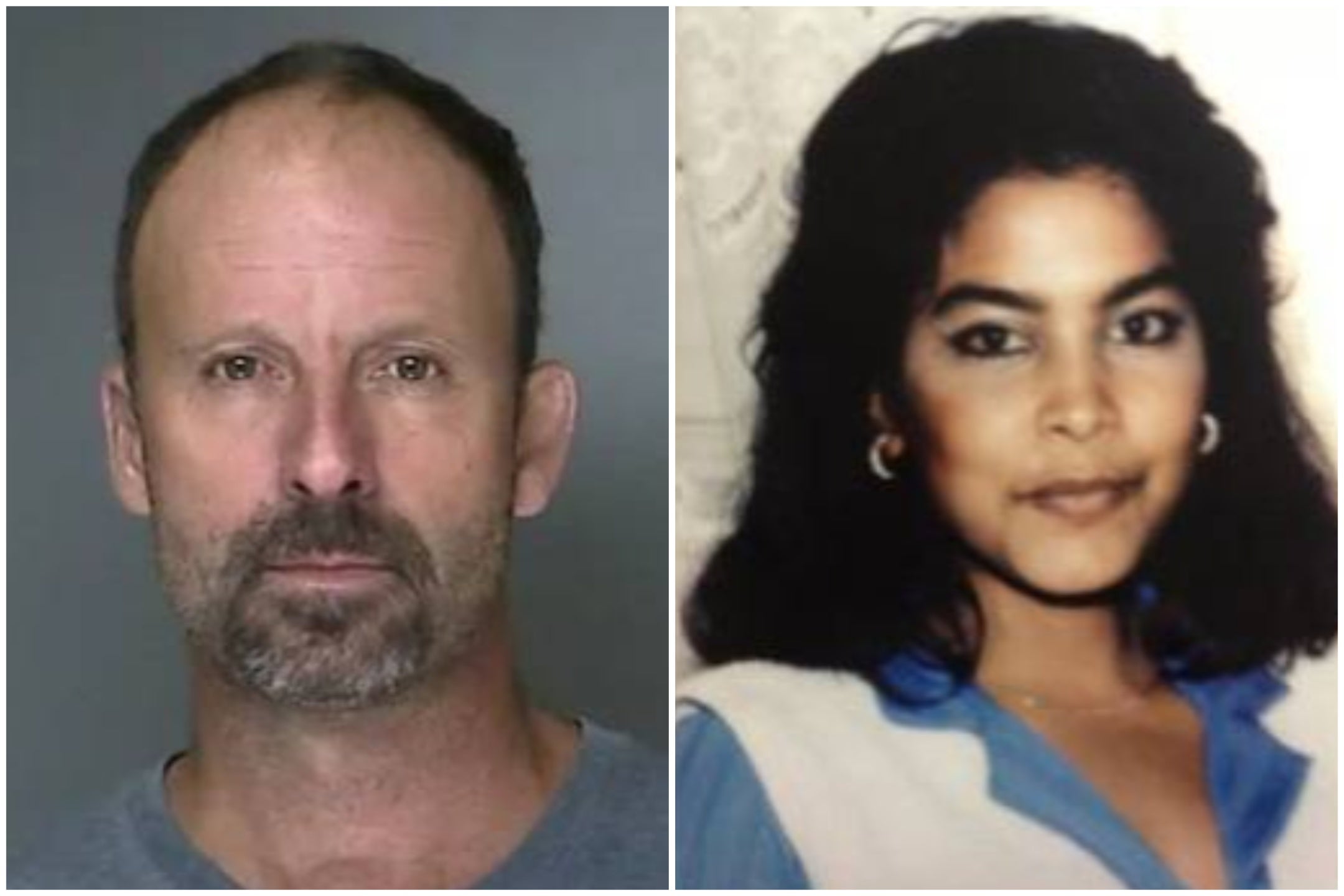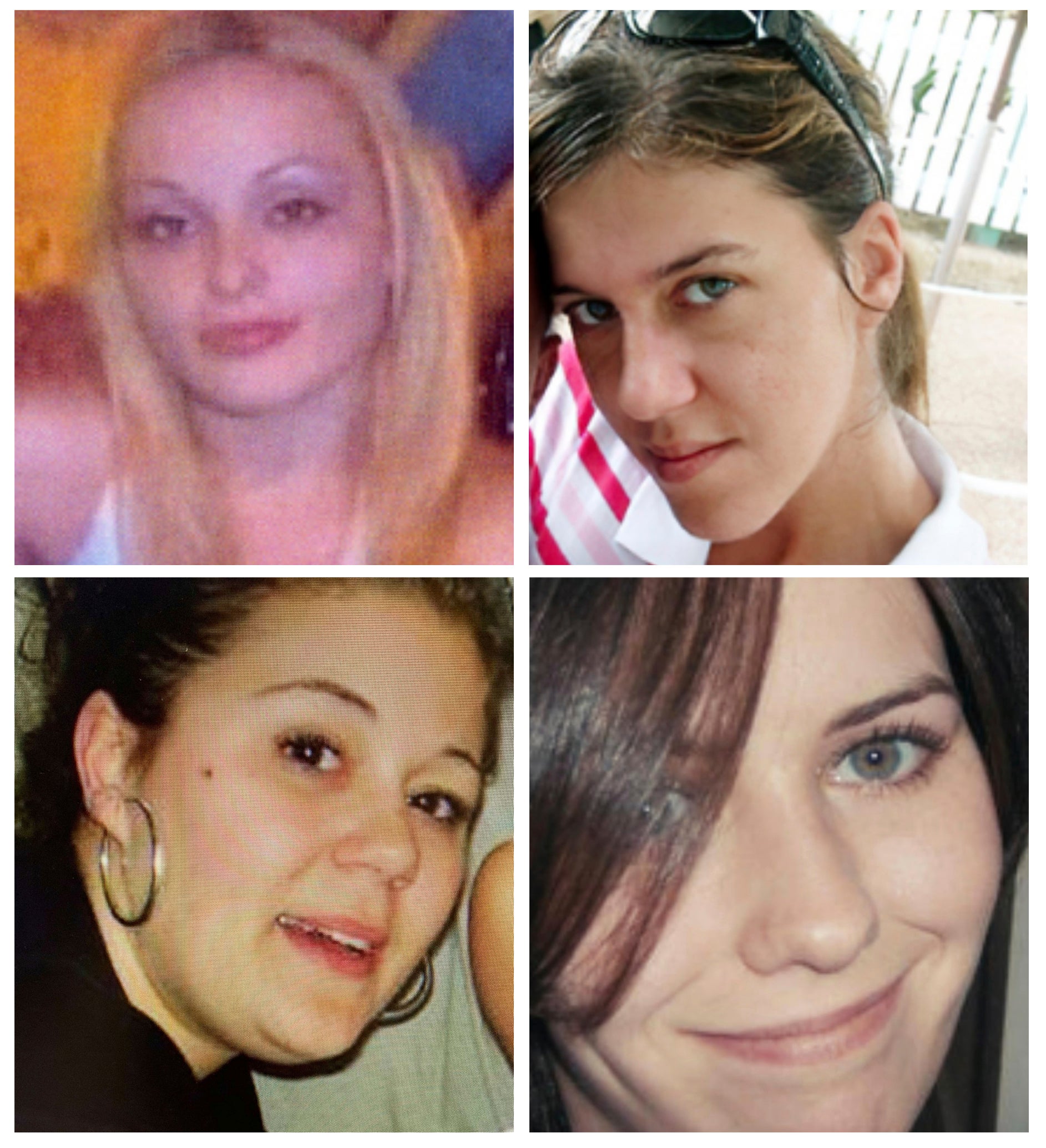Gilgo Beach suspect charged with more murders after cops find twisted ‘blueprint’ of killings
Rex Heuermann, 60, of Massapequa Park, was arraigned in a Long Island courtroom Thursday in the July 2003 dismemberment death of Jessica Taylor and the November 1993 death of Sandra Costilla
Accused Gilgo Beach serial killer Rex Heuermann has been charged with the brutal murders of two more women whose remains were found over two decades ago after authorities found a damning document in which he discussed his crimes in “excruciating detail,” prosecutors announced Thursday.
Heuermann, 60, was back in court in Riverhead, New York, on Thursday morning where he was arraigned on murder charges in the 2003 dismemberment death of 20-year-old Jessica Taylor and the 1993 death of 28-year-old Sandra Costilla. He pleaded not guilty to the shocking charges that came just days after another exhaustive search at his Long Island home.
Suffolk County District Attorney Ray Tierney revealed that Heuermann kept a “blueprint” of his crimes on a hard drive in his basement of his Massapequa Park home which was recenly searched for a second time.
Tierney said Gilgo Beach Task Force believes “this planning document that was used by Heuermann to plot out his kills with excruciating detail.”
“His motivations, meticulous planning, and clear intent were obvious,” Tierney told reporters on Thursday, following the arraignment. “His intent was nothing short but to murder these victims.”

Attorney John Ray, who represents some of the victims’ families, said this digital data was essential to the new charges.
“He didn’t think that any of these things that he listed would ever be found because they were buried within his electronic devices that he had erased a long time ago,” Ray said. “What he didn’t recognize is the sophistication of modern electronic data investigation, and that’s what these things turned around.”
Ray called Heuermann a “stalker” who took great pleasure in hunting the women he allegedly killed.
The twisted document the accused killer kept in his home, which was released shortly before the hearing began, features a series of checklists with tasks to complete before, during and after the killings, as well as practical lessons for “next time.” Among the dozens of entries written are reminders to clean the bodies and destroy evidence, to “get sleep before hunt” and to “have story set.”
One section, titled “things to remember,” appears to highlight lessons from previous killings, prosecutors said, such as using heavier rope and limiting noise in order to maximize “play time.” A “body prep” checklist includes, among other items, a note to “remove head and hands.”

The former Manhattan architect, who was first arrested in July 2023, has already been charged with the 2009 and 2010 murders of Megan Waterman, Melissa Barthelemy, Amber Lynn Costello and Maureen Brainard-Barnes – collectively known as the “Gilgo Four” – after their remains were found in burlap sacks along Ocean Parkway. He has pleaded not guilty to those murders.
The remains of the four women were the first of 10 found along a remote beach parkway on Long Island between late fall 2010 and early spring 2011. All four women were sex workers, authorities have said.
Jessica Taylor, a Poughkeepsie resident who worked as an escort in New York City, was found dismembered in a wooded area of Manorville, New York, on July 26, 2003. Her torso was found, but other parts were missing.
Those remains, including her head, hands and forearm were discovered years later – along Ocean Parkway on March 29, 2011 – and initially labeled “Jane Doe No. 5.”
Gloria Allred, who represents several of the victims’ families, including Taylor, spoke at the courthouse on Thursday. She read a statement provided by Taylor’s mother Elizabeth Baczkiel.
“My darling daughter, you will never be forgotten,” the statement said. “You will forever be in our hearts.”
Baczkiel was at the hearing, but chose not to speak. Instead she tearfully clutched childhood photos of her daughter.

Sandra Costilla, the second victim named in the indictment, was a resident of Queens whose remains were found on November 20, 1993, on Cove Road in North Sea, a Southampton town. She had not been included among the group of Gilgo Beach victims — until now.
Investigators suspected that convicted serial killer John Bittrolff was linked to Costilla’s murder, but he was never charged. He is currently serving a 50-years-to-life sentence at Clinton Correctional Center in Dannemora.
Heuermann’s lawyer, Brown, said he planned to request the prosecution’s files on Bittrolff.
“Quite frankly, the police department and the district attorney’s office all had the finger pointed at Bittrolff for that murder,” he said.

It was also revealed that investigators found a book in Heuermann’s possession “The Cases That Haunt Us,” by the retired FBI agent John Douglas, who also wrote Mindhunter.
Mindhunter was also referenced in the document, alluding to the personality types of serial killers and profiles of those who use mutilation and sexual violence.
Prosecutors say part of the document that refers to a “body prep” checklist and a note to “remove head and hands” could connect Heuermann to another victim, Valerie Mack.
Mack’s partial skeletal remains were discovered near the body of Taylor after her disappearance in 2000.
Heuermann has not been charged in the death of Mack. But asked during a news conference after Thursday’s hearing if he was a suspect, District Attorney Ray Tierney replied, “That’s fair to say.”
Heuermann pleaded not guilty to killing Taylor and Costilla during the hearing and was ordered held without bail. His lawyer, Michael Brown, said outside court that Heuermann is “obviously in a bad place in terms of the new charges.”
Afterward, Tierney said the additional charges provide “some small measure of closure” for the victims’ families.
Taylor and Costilla are the first alleged victims of Heuermann who were murdered before 2007, according to Newsday, which first reported news of the indictment this week.
This is also the first time he’s been charged in connection with victims whose remains were found dismembered and somewhere other than Ocean Parkway. This expands the area of where he allegedly dumped bodies by more than 40 miles.
Gilgo Beach victim was once tied to a different suspect
Investigators descended on Long Island’s Manorville in April looking for evidence in the 1993 murder of Costilla, which they had hoped to tie to convicted murderer John Bittrolff, 57, police sources with knowledge of the case told the New York Post at the time.

The extensive search shifted to North Sea, a hamlet within Southampton Town, where she had been found on November 20, 1993, beaten and strangled. She was nude and her hands were tied behind her.
Costilla, who also used the last name Cutello, was 28 years old when she was killed. She had lived in Ridgewood, Queens until around 1992, police said at the time. And records showed she had also previously lived in an apartment in Flushing, Queens
She was initially linked to the murders of Colleen McNamee and Rita Tangredi, who John Bittrolff was later convicted of killing.
But the DNA linking him to the other two victims was not found at Costilla’s scene, former Assistant District Attorney Robert Biancavilla said in 2014.

Her death had not been tied to the Gilgo Beach investigation until K-9 units spent five hours in April searching the wooded North Sea property where her remains had been found, Newsday reported.
While the other Gilgo Beach murder victims have been described by police as sex workers, Costilla was not.
Just months before Heuermann was arrested at his Manhattan firm last year, Bittrolff was dismissed as the Gilgo Beach suspect.
Gilgo Beach saga began with a missing sex worker
The case began back in May 2010 when Shannan Gilbert, a young woman working as a sex worker, vanished after leaving a client’s house on foot near Gilgo Beach. She called 911 for help saying she feared for her life and was never seen alive again.
During a search for Gilbert in a dense thicket close to the beach, police discovered human remains. Within days, four victims had been found. By spring 2011, the number of victims rose to 10.
Gilbert’s body was then found in December 2011. Her cause of death is widely contested with authorities long claiming that it is not connected to the serial killer or killers but that she died from accidental drowning as she fled from the client’s home.

However, an independent autopsy commissioned by her family ruled that she died by strangulation and her family continues to believe she was murdered.
Court records show that Heuermann was linked to the “Gilgo Four” murders through a tip about his pickup truck, a stash of burner phones, “sadistic” online searches and phone calls taunting victims’ families.

Email accounts allegedly used by Heuermann were used “to access and/or conduct searches related to pornography, rape, torture, and sex workers several thousand times,” prosecutors said.
His DNA was also found on one of the victims, while his wife’s hair was found on three of the four women he is connected to, according to prosecutors.
Investigators are continuing to work to determine if Heuermann is also linked to any of the other victims – while law enforcement officials across the country are probing cold case murders for any potential ties.
A trial date has not been set.